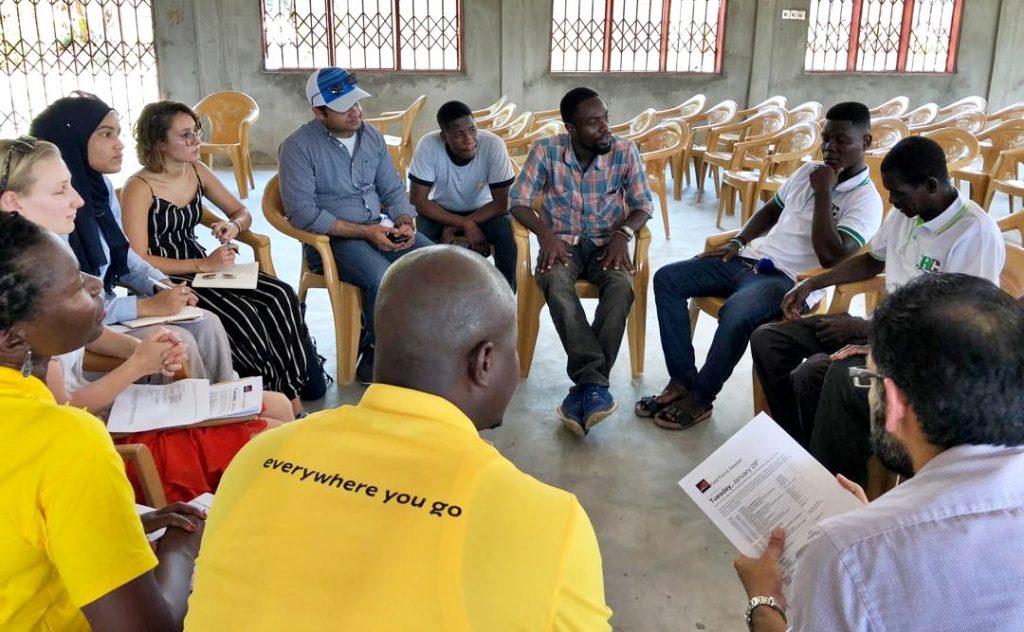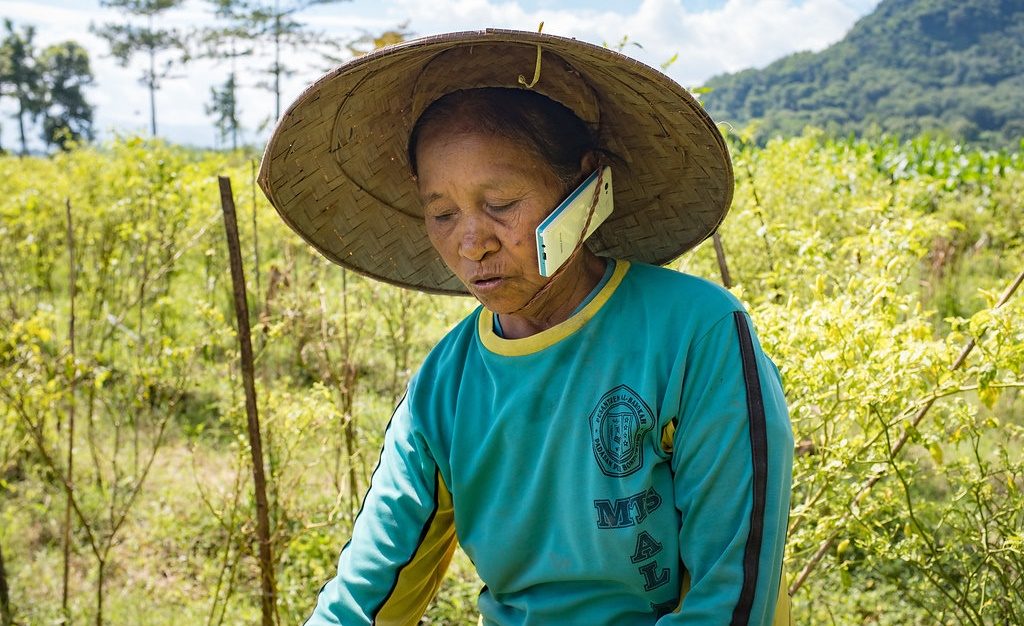What is our MEL framework?
In the early phases of service design, the key objective is to identify the myriad of challenges (pain points) that various stakeholders experience, including farmers and other actors in the value chain (field clerks, agribusiness office staff, mobile money agents). After identifying pain points, it is possible to develop an idea for a digital tool that offers a solution to a problem, and that becomes a minimum viable product (MVP).
A theory of change for the service that ensures that key business objectives for each of the stakeholders involved can be achieved through the service itself. The output of a theory of change states the overall aim of the project and the steps required by each stakeholder to achieve that objective. Indicators become fundamental to qualify, and possibly quantify, each step along the theory of change.
For a Mobile Money Provider launching an enterprise tool for last-mile procurement (digitisation of business-to-farmer payments via mobile money and farmer data), a theory of change could look like the one shown below.
Figure 1: MEL framework for an MNO supporting agricultural last-mile digitisation
Taking the above example, a digital enterprise tool for the agricultural last mile could benefit an MNO by enabling ‘better access to farmer data’. This benefit is quantifiable using indicators such as number of farmer data points collected or number of farmers registered. Within ‘increased number of active mobile money accounts’, indicators could include ‘number of 30-day active accounts’ or number of transactions or value of transactions.
Monitoring, evaluation and learning is traditionally used to measure social impact
In the world of ICT4D, where funding largely comes from international donors, MEL is mostly a framework for accountability, learning and communication purposes. As an accountability framework, MEL must outline if results have led to measurable and effective impact of the digital intervention. As a learning framework, MEL serves to inform stakeholders engaged in the project (donors, service providers, users), as well as the broader universe of industry practitioners, on what worked and what did not work. Finally, MEL can become a powerful framework for communication, in order to share results with the public and donors.
How can MEL data support commercial product development?
MEL supports GSMA AgriTech’s commercial service partners (i.e. MNOs, AgriTech companies) in achieving their business objectives, while it also serves our own social impact objectives, which we share with our donors. There is however, an additional benefit that an MEL framework brings to all parties that support a digital intervention, and that is that MEL is a key source of data for continual service improvement.
Figure 2: Quarterly product iteration process.
As part of the product iteration process, a MEL framework:
- Creates Key Performance Indicators (KPIs) to quantify the results realised by the service;
- Encourages collaboration between stakeholders working towards a shared aim;
- Provides direct feedback on what improvements may be necessary to ensure the service meets the needs of customers.
For projects that are more complex, the MEL framework itself requires iteration
The services that the GSMA AgriTech programme will support in the coming years, including those funded via our new Innovation Fund, are inherently complex because they involve interactions and processes involving multiple stakeholders. What this means for us is that the MEL framework that we initially created for direct-to-consumer services needs to evolve. When we revisited for B2B2C last-mile digitisation services the process originally implemented during the mNutrition for D2C Agri VAS, a number of new challenges emerged:
- Farmer consent to sign up to a service and/or to share data: This kind of data can originate from various sources. In some cases, it can come directly from farmers; however, it is likely to originate from an agribusiness, as in the case of a field clerk who inputs farmer and farmer data into an enterprise app for an agribusiness. Third-party registration was an issue also with D2C Agri VAS, as in the case pf agent-led registration. However, it is clear that in an enterprise service it is even more important to check how data is sourced, collated and analysed.
- Capacity building within consortia of service providers (MNOs, AgriTech partners): The MEL framework should incorporate project-specific KPIs as well as existing ‘generic’ KPIs that work towards the broader business objective of different stakeholders (e.g. increased revenues via last-mile digitisation services) as part of a lean approach.
- The impact and role of all different stakeholders – A last-mile digitisation project involves a number of critical stakeholders beyond the service provider (MNO, Mobile Money Provider, AgriTech company) and the immediate end-users (farmers and agribusinesses). These stakeholders may include third parties like mobile money agents that are responsible to disburse payments to farmers, and financial service providers, who may gain access to farmer and farm data for credit scoring purposes. A solid MEL framework should include these stakeholders and seek feedback from them.
- Evolution of farmer archetypes over time – For effective MEL and service design, it is important to define from the onset of farmer archetypes as broad sets of users based on common characteristics. Farmer archetypes help product teams target their offering to likely early adopters. As a service evolves, it reaches new users resulting in a changing socio-demographics of the population targeted. Service providers should keep this in mind because fixated definitions of farmer archetypes will limit over time the opportunity to compare data.
As we embark with our partners on developing and launching digital tools for the agricultural last mile, we recognise that success will depend on the implementation of a solid and flexible MEL process that focusses on innovation, and that uses a collaborative approach with stakeholders in alignment with their commercial and social objectives.
The GSMA Innovation Fund for Digitisation of Agricultural Value Chains
At the start of 2020, the GSMA AgriTech programme will announce the new services supported under the GSMA Innovation Fund for Digitisation of Agricultural Value Chains. The Fund aims to scale digital solutions for the agricultural last mile and improve smallholders’ financial inclusion, livelihood and climate resilience. The Fund will provide grants as well as deep technical expertise to service providers, including data analytics and the design of a strong MEL framework to support product development.





